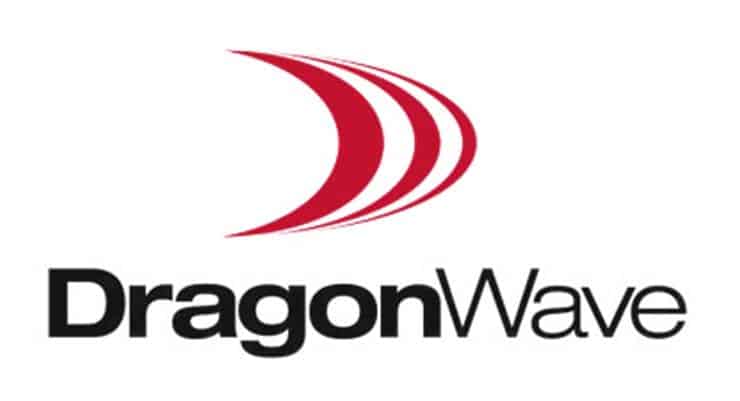By Greg Friesen,
Vice President of Product
Management, DragonWave.
There are a number of mobile and backhaul trends emerging for 2015. We expect to see tremendous macrocell backhaul capacity growth that will be driven by the ongoing rollout and maturation of LTE-Advanced networks, as well as a continuing surge in the purchase and use of LTE devices that will continue to drive a need for higher backhaul capacities.
#1: E-Band to Pick Up on the Back of Stronger Demand for Mobile Backhaul Capacity
On the wireless backhaul side, there are a number of technologies and tactics that will need to be employed in order to meet the ever-growing capacity demand being driven by mobile end users. Emphasis will be placed on microwave equipment capable of delivering new modulations, multi-channel support, bulk-compression technologies and wider frequency bands. However, this will also place a greater strain on backhaul spectrum, which will, in turn, drive operators to seek out ways to achieve the best spectral efficiency obtainable. There will also be a continued interest in E-Band, and it will be much more broadly deployed for mobile backhaul in 2015, due to it having become regulated globally, and the technological advancements that have resulted in significant increases in E-Band reach. Deploying E-Band as an option will allow operators to have a higher scale solution at a lower spectrum cost than traditional microwave.
#2: Outdoor DAS and Cloud RAN Deployments to Drive Wireless Fronthaul Solutions
In the coming year, we also expect to see some of the first outdoor DAS or cloud RAN deployments. These deployments will be largely fiber-based to start, but, as they become broader, wireless fronthaul will be required in order to provide ubiquitous coverage, because fiber won’t be readily available for every network scenario. Recent analysts’ reports predict a potential $1 billion new market opportunity for fronthaul equipment vendors, with wireless fronthaul solutions viewed as being deployed as a complement to optic-based fronthaul, rather than as a competitive solution. Wireless fronthaul solutions will be enabled through V-Band and E-band microwave radio systems, with many validating field tests having been conducted in the past year.
Greg Friesen,
Vice President of Product Management,
DragonWave

#3: Smallcells Deployments to Grow Significantly
In 2015, we will also see small cells evolve from current indoor deployments and move to growing outdoor deployments, as operators strive to meet growing mobile backhaul demands. In fact, a recent ABI Research report states that after some rollout delays in the small cell market, 2015 will witness meaningful deployments.
These small cell deployments will leverage fiber where available, but will also depend a great deal on wireless backhaul. This will drive the continued development and advancement of small cell wireless backhaul technologies, which we anticipate to evolve significantly in 2015. One area in wireless backhaul that will be affected is radio systems’ aesthetics, as operators are forced to address real-world deployments and the unique zoning challenges that must be overcome. Additionally, there will also be a trend towards backhaul and access integration to simplify small cell deployments. What’s more, we expect 2015 to see the start of dynamic small cell networks, with auto-alignment, re-configurability, auto-restore, path-searching, and dynamic capacity features being necessary integrated components for deploying robust small cell networks quickly and efficiently.
#4: Fragmentation in the Backhaul Market
We expect there to be even wider confusion on determining the most viable small cell backhaul solutions, as operators deploy a wide range of solutions and architectures, without a clear trend to a single solution. How operators make these choices will be very dependent of spectrum availability and the operational, site, and zoning realities they’ll face. This will lead to a very fragmented backhaul market in 2015 – one where vendors will continue to work to broaden the applicability of each of their solutions.
#5: Increased Small Cell RAN sharing
Lastly in 2015, we expect operators to adjust their business models to be able to cost effectively deploy small cell networks with a positive return on investments. This will lead to increased mobile operator partnerships involving small cell RAN sharing. In addition, it will lead to many strategic partnerships in order to acquire street furniture access through joint venture with municipalities, utilities landlords and outdoor advertising companies.
About The Author:
Greg Friesen is the Vice President of Product Management at DragonWave, responsible for global product management responsibilities across DragonWave’s complete portfolio of products. This role includes regular interaction with customers to understand their evolving network requirements. Greg has 13 years experience in senior product management roles, network design, planning, and engineering, at a number of communications firms, including his current role at DragonWave and previous roles at Nortel Networks, Innovance Networks, and Fundy Telecom. As Senior Product Manager at Innovance Networks he was responsible for all product definition, architecture, and network design. He has been involved in the planning and engineering of over 10 nationwide network deployments. His experience ranges from operations and Capex modeling to network architecture design to site and link engineering. Greg holds B.Sc. in Electrical Engineering from University of Saskatchewan. Greg has authored numerous papers and magazine articles in publications including Microwave Journal, Telecommunications, Xchange, Telephony Online, Last Mile, AGL, Radio World, and has spoken at numerous industry conferences such as WiMax World, CTIA, Telecom Next, ISPCon and UTC. Greg holds 2 granted patents and has 3 pending applications in the networking area.




















